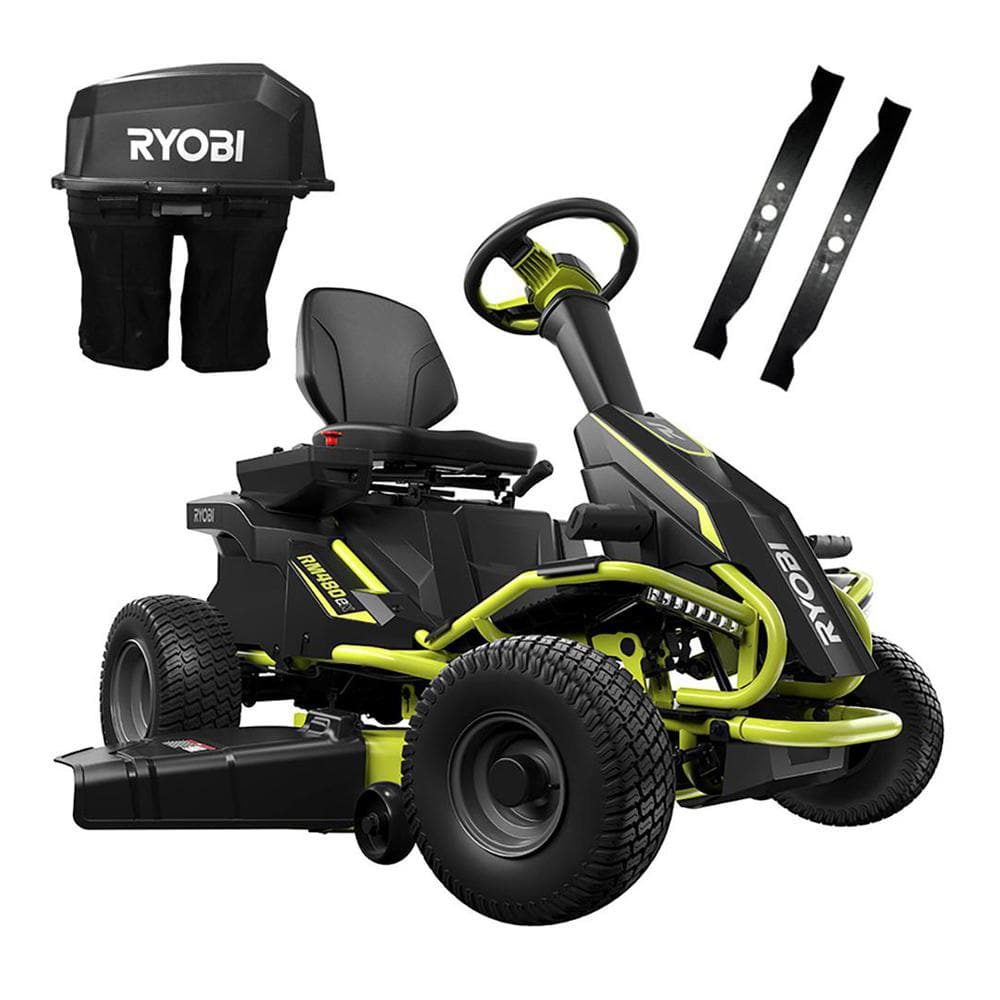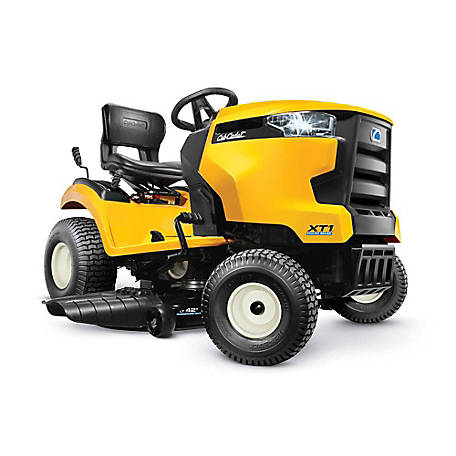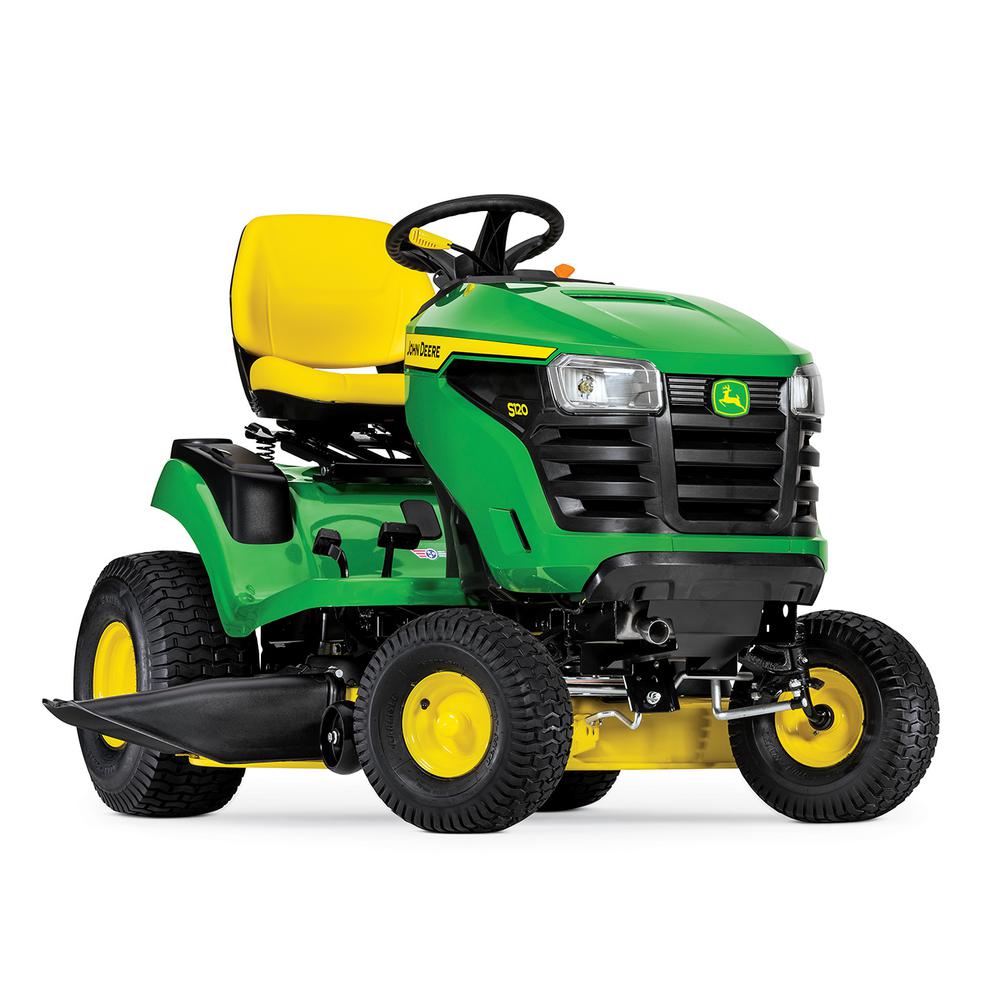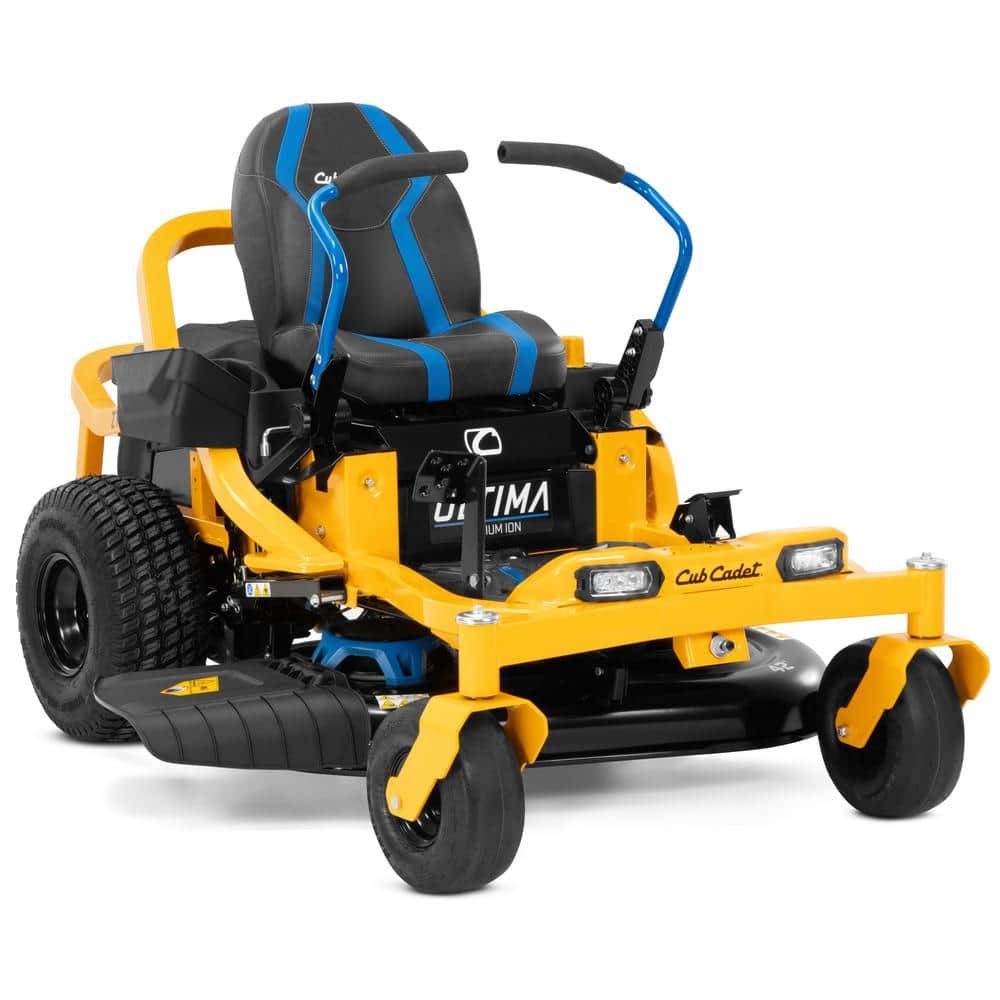RYOBI 38 in. 100 Ah Battery Electric Rear Engine Riding Lawn Mower and Bagging Kit
Low Maintenance – No Gas, Belts, Spark Plugs or Filters. Easily Run up to 2.5 Hours or 2.5 Acres of Mowing Per Charge. Fully Electric Riding Mower with Zero Emissions – Bagger Included.
It’s never been a better time to turn away from gas and towards the RYOBI 48V Battery Powered Riding Mower. Achieve a clean, level cut with the 38 in. 2-blades on the RYOBI 48-Volt Riding Lawn Mower and Bagging Kit. This is a greener alternative to a traditional riding lawn mower because of its 100 Ah lead acid battery power. With this feature, you get 2 and a half extra hours of run time. There are LED headlights with a USB phone charger and a cruise control feature too. This engine is quiet and emits 70 dB to allow for you to mow early and not disturb your neighbors.
- Battery powered – no gas, no fumes
- Up to 2.5-hours of run time on 1 charge
- Quiet cutting at less than 70 dB
- 12-position manual deck adjustments, from 1.5 in. to 4.5 in.
- 38 in. 2-blade deck
- Cruise control
- LED headlights
- USB charger
- Charges through standard 120-Volt outlet
- 1 bagger and 2 bagging blades included
- High density poly ethaline cover and connection tubes
- Nylon mesh bagging bins
- Some assembly required
- Replacement Battery: Leoch model LPC12-100
Additional information
| Assembled Depth x Height x Width (in.) | 63 x 46 x 38.5 |
|---|---|
| Cutting Width (In.) | 38 |
| Front Wheel Size (in.) | 15 |
| Mower Deck Width (In.) | 38 |
| Rear Wheel Size (in.) | 16 |
| Turning Radius (in.) | 16 |
| Certifications and Listings | TUV Listed |
| Manufacturer Warranty | 3 year Limited Warranty. Battery warranty is for one year only. |






by Lindsay
Has plenty of battery life
by Morgan
Quiet. Battery lasts longer than advertised. I was able to cut my 2.49 acre area in one charge, although the house and beds would’ve been subtracted. It’s a rough ride, but I am used to it. Follow instructions carefully on charging- including the order of connecting the charger. I had days where no charge was going to the battery because I hadn’t followed the instructions. Power and acceleration are excellent. Turning radius is good. I intend to purchase the snow plow attachment. I would recommend this mower to anyone.
by Ron
Love this mower! Using it for mowing as well as towing utility cart for yard work and aerating lawn with aerator attachment.
by Wendy
Have only used it for 2 hours. So far, I like it a lot . I had to source several bolts to finish assembly.
by Peter
Absolutely great purchase so far! No issues and functions great! Easy to operate and mows perfectly!
by Paul
So this is my first electric riding mower. I have to say that so far I am very impressed. No difficulties with assembly and performance has been great. I have about 0.8 acre with hills and I use about 1/4 to 1/3 of a full change for a mow. I would highly recommend this product.